STOP THE TREATY
All YOU need to do is share this information with other people, and ask them to actually read the damn document. Sane people do NOT want this stupid treaty. StopTheTreaty.org #StopTheTreaty
Updated: February 19, 2024
StopTheTreaty.org #StopTheTreaty
CLICK HERE TO READ THE LATEST VERSION OF THE “PANDEMIC TREATY”
SUMMARY:
The World Health Organization’s attempt to negotiate a trade agreement (in secret) in order to ensure “equitable access” to pharmaceutical poisons and injectable bioweapons is NOT a sane way to prevent the next pandemic. It is evil.
This is organized crime that is designed to seek out “pathogens with pandemic potential” in order to terrorize billions of people around the world and convince them to damage their health while the organizations that are involved rake in billions of dollars from both public and private sources.
Please watch all the 30 second video below…
United States Constitution
Article 1, Section 8, Clause 3 Commerce
“To regulate Commerce with foreign Nations…”
https://constitution.congress.gov/browse/article-1/section-8/clause-3/
Please watch the videos below…
https://rumble.com/v4dywdc-important-information-on-stop-the-treaty-with-james-roguski.html
https://www.brighteon.com/b1101b0d-1dff-4141-961e-1ff66d8125b0
The interview below begins at 8 minutes
NOTE: The discussion with Shadoe Davis was recorded BEFORE I obtained the advanced copy of the “Proposal for negotiating text of the WHO Pandemic Agreement”
At the time of publication of this article, updated versions of Article 12, Article 14 and Article 15 were not available.
Article 12 addresses the proposed Pathogen Access and Benefit Sharing System. The PABS System is very hotly contested, and lies at the very heart of the agreement. I will be publishing an EXTENSIVE article about the PABS System ASAP.
Article 14 addresses Regulatory Strengthening.
Article 15 addresses Compensation and Liability Management
Click on the image above to download it to your computer or phone so that you can share it across social media. Download the PDF below in order to print the flyer and distribute it far and wide.
“We the People” prevented the United States from ratifying the Trans Pacific Partnership simply by exposing it for what it really was.
“We the People” will also stop the United States from ratifying the proposed “Pandemic Agreement” by simply exposing it for what it really is.
There is NO WAY that 2/3 of the United States Senate will EVER consent to this proposed agreement.
“We the People” will not allow it!
I am confident that people around the world can, must and will also #StopTheTreaty
The World Health Organization should just give up right now.
Equity is at the centre of pandemic prevention, preparedness and response, both at the national level within States, among and within countries or regions, and at the international level between States. Equity includes, but is not limited to, the unhindered, fair, equitable and timely access to safe, effective, quality and affordable pandemic-related products and services, information, pandemic-related technologies and social protection, taking into account specific measures to protect persons in vulnerable situations. (3.5)
The “Proposal for negotiating text of the WHO Pandemic Agreement” is designed to be a business deal to use government funds to build out the Pharmaceutical Hospital Emergency Industrial Complex in order to terrorize people around the world with the prospects of “Disease X” while spending billions of dollars looking for pathogens that have the potential to cause “Disease X.”
PLEASE KEEP THE TWO DOCUMENTS SEPARATE
For those people who have been mixing up the details between the proposed amendments to the International Heath Regulations and the “Proposal for negotiating text of the WHO Pandemic Agreement,” please note the following…
The “Proposal for negotiating text of the WHO Pandemic Agreement” does NOT seek to take away the dignity, human rights and fundamental freedoms of people. (3.3)
The “Proposal for negotiating text of the WHO Pandemic Agreement” is NOT an attack on national sovereignty. (3.4)
Nothing in the WHO Pandemic Agreement shall be interpreted as providing the Secretariat of the World Health Organization, including the WHO Director-General, any authority to direct, order, alter or otherwise prescribe the domestic laws or policies of any Party, or to mandate or otherwise impose any requirements that Parties take specific actions, such as ban or accept travellers, impose vaccination mandates or therapeutic or diagnostic measures, or implement lockdowns. (26.3)
The “Proposal for negotiating text of the WHO Pandemic Agreement” is now, and always has been designed to address a trade dispute. It seeks to guarantee equitable distribution of and access to pandemic-related products - this means that…
The above concerns (and more) have always been in regards to the proposed amendments to the International Health Regulations. Many people have mistakenly mixed up and or combined the two agreements.
Please review the following for additional information about the proposed amendments to the International Health Regulations:
https://jamesroguski.substack.com/p/pop-quiz
https://jamesroguski.substack.com/p/stop-the-amendments
https://jamesroguski.substack.com/p/reject-digital-enslavement
https://jamesroguski.substack.com/p/global-digital-health-certification
Below are several excerpts from the leaked version of the “Proposal for negotiating text of the WHO Pandemic Agreement.”
Article 20: [“THE MECHANISM”]
2. The Governing Body of the WHO Pandemic Agreement shall adopt, every 5 years, taking fully into account the International Health Regulations, a Financial Strategy on prevention, preparedness and response to health emergencies and pandemics. The Parties, particularly those providing support for the implementation of pandemic prevention, preparedness and response, shall align with the Financial Strategy while financing the relevant funding mechanisms, both within and outside WHO.
3. A Coordinating Financial Mechanism (the “Mechanism”) is hereby established to support implementation of the WHO Pandemic Agreement and increase the effectiveness and efficiency of existing and future financial mechanisms, within or outside WHO, including by providing additional financial resources to strengthen and expand capacities for pandemic prevention, preparedness and response in Cooperating Parties, in particular in developing country Parties. The Mechanism will also contribute to funding the Secretariat of the WHO Pandemic Agreement.
5. The Mechanism shall consist of a pooled fund to provide targeted, supplementary financing to support strengthen and expand capacities for pandemic prevention, preparedness and response, and as necessary for day zero surge response, in Cooperating Parties when other resources are not accessible through existing financing entities. It shall be sourced through monetary contributions received as part of operations of the PABS System, voluntary funds from both States and Non-State Actors and other contributions to be agreed upon by the Governing Body of the Pandemic Agreement.
7. In order to support the Mechanism, the Secretariat of the WHO Pandemic Agreement shall, inter alia [among other things]:
a. identify financing instruments and mechanisms, within or outside WHO, that are available to serve the purposes of prevention, preparedness and response to health emergencies and pandemics, and maintain a dashboard of such instruments, and related information such as eligibility criteria, modalities and levels of funding available, priorities and process requirements, including financial contributions made by Parties and non-State Actors, as applicable, to such instruments, and the funds allocated to countries from such instruments;
b. establish, as necessary, following a mandate from the Governing Body of the WHO Pandemic Agreement, working arrangements with relevant identified financing instruments and entities to facilitate their alignment with the Financial Strategy;
8. The Mechanism shall function under the authority and guidance of the Governing Body of the WHO Pandemic Agreement and be accountable to it. The Governing Body of the WHO Pandemic Agreement shall adopt modalities for the operationalization of the Mechanism, including eligibility criteria and the establishment of a governing board of the Mechanism, with balanced representation of WHO regions and developed and developing country Parties, within 12 months after the entry into force of the Pandemic Agreement.
Article 1: Use of Terms
(a) “authorized national laboratory” means a laboratory authorized and designated by a Party to provide PABS Materials to the PABS System and recognized as part of the WHO Coordinated Laboratory Network.
(e) “health worker” means individuals who provide assistance, surveillance…
(i) “pandemic-related products” means products that are needed for pandemic prevention, preparedness and response, which may include, without limitation, diagnostics, therapeutics, medicines, vaccines, personal protective equipment, syringes and oxygen;
(j) “Party” means a State or regional economic integration organization that has consented to be bound by this Agreement, in accordance with its terms, and for which this Agreement is in force;
(k) “pathogen with pandemic potential” means any pathogen that has been found to infect humans and that is potentially highly transmissible, capable of wide, uncontrollable spread in human populations, and highly virulent, making it likely to cause significant morbidity and/or mortality in humans;
(m) “recipient” means receivers of WHO Pathogen Access and Benefit-Sharing (WHO PABS) Material from the WHO coordinated laboratory network, such as manufacturers of vaccines, diagnostics, pharmaceuticals and other products relevant to pandemic prevention, preparedness and response, as well as biotechnology firms, research institutions and academic institutions. Any manufacturer that enters into any contracts or formal agreements with recipients or laboratories in the WHO coordinated network for the purpose of using WHO PABS Material on the manufacturer’s behalf for commercialization, public use or regulatory approval of that manufacturer’s vaccines, diagnostics or pharmaceuticals shall also be considered a recipient for purposes of this Agreement;
(o) “WHO coordinated laboratory network” means the international network of laboratories, coordinated by WHO, that conduct year-round surveillance of pathogens with pandemic potential, assessing the risk of an emerging pathogen with pandemic potential and assisting in pandemic preparedness measures; and
(p) “WHO PABS Material” means a pathogen with pandemic potential, as defined herein, and the genetic sequence data of such pathogens with pandemic potential.
Article 3, Section 8: Common but differentiated responsibilities and respective capabilities in pandemic prevention, preparedness, response and recovery of health systems
Governments have a responsibility for the health of their peoples which can be fulfilled only by the provision of adequate health and social measures. Given the unequal global development in the promotion of health and control of diseases, especially communicable disease, is a common danger, developed countries that hold more capacities and resources relevant to pandemics should bear a commensurate degree of differentiated responsibility regarding global pandemic prevention, preparedness, response and recovery through effective means of implementation, such as technology transfer and know-how as well as financial resources.
Article 10.1: Sustainable and geographically diversified production
1. The Parties, in collaboration with WHO and other relevant entities, with a view to achieving a more equitable geographical distribution of the global production of [product placeholder/ pandemic-related health products] and thus increasing equitable access to such products, thereby reducing the potential gap between supply and demand, shall endeavour to:
a. take measures, in cooperation with regional arrangements, to identify and/or designate support, maintain and strengthen production facilities at national and/or regional levels, particularly in developing countries, and to facilitate production of product placeholder, as appropriate;
b. in cases where the production capacity does not meet demand during a pandemic, take measures to identify and contract, as appropriate, with facilities other than those referred to in sub-paragraph (a) for scaling up the production of product placeholder; including through promoting and incentivizing public and private investment aimed at creating or expanding economically viable manufacturing facilities of relevant health products;
c. take measures, and encourage international organizations, to establish long-term contracts and make investments, especially in developing countries’ facilities preferably with a regional scope of operation, that generate predictable demand for product placeholder produced by local and regional manufacturers. For this purpose, the Parties, as appropriate, should act individually and jointly by means of grants, loans, blended finance, taxation and other incentives and promotion measures;
d. facilitate the continuous and sustainable operations of the facilities referred to in Paragraph 1.a of this Article, including through transparency of relevant data [unprotected] information on pandemic-related health products and raw materials, across the value chain;
e. facilitate the transfer of relevant technology, know-how and licenses pooled in the mechanism referred to in Paragraph 2 of Article 11, to facilities referred to in Paragraph 1.a of this Article;
f. actively support and facilitate, as appropriate, skills development and capacity-building programmes and other initiatives aimed at enabling production facilities, particularly those referred to in Paragraph 1.a of this Article;
g. promote public and private sector investments aimed at creating or expanding manufacturing facilities for product placeholder, especially regional manufacturers based in developing countries; and
h. facilitate the necessary regulatory authorization of health products produced by facilities referred to in Paragraph 1.a of this Article.
Article 10.2
Each Party is encouraged to cooperate further with the WHO to the conduct of global disease burden studies relevant to pathogens with pandemic potential, in collaboration with other relevant international organizations, with a view to promoting the sustainability of investments in facilities for the production of vaccines and therapeutics that could support pandemic response.
Article 11: Transfer of Technology
1. In order to enable sufficient, sustainable, and geographically-diversified production of pandemic-related products, each Party, shall collaborate towards:
a) promoting and otherwise facilitating or incentivizing the transfer of technology and know-how for pandemic-related products on voluntary and mutually-agreed terms…
c) license, on a non-exclusive basis and for the benefit of developing countries, government-owned pandemic-related technologies…
d) providing, within its capabilities, support for capacity-building for the development and transfer of technology and know-how…
3. During pandemics, in addition to the undertakings in paragraph 1 of this Article, each Party shall encourage holders of relevant patents related to the production of pandemic-related products, in particular those who received public funding, to waive/forgo or otherwise charge reasonable royalties to developing country manufacturers for the use, during the pandemic, of their technology and know-how for the production of pandemic-related products.
6. Each Party shall review and update as necessary its national legislation in order to ensure the implementation of such flexibilities in a timely and effective manner.
AN OFFICIAL DRAFT OF ARTICLE 12 IS NOT CURRENTLY AVAILABLE. TO REVIEW THIS ENORMOUSLY COMPLICATED ISSUE, PLEASE READ THE ARTICLE BELOW:
Article 13: Global Supply Chain Network
1. The Global Supply Chain and Logistics Network (the Network) is hereby established.
The [Global Supply Chain and Logistics] Network shall be developed and operated by WHO in partnership with the Parties and other relevant international and regional organizations and stakeholders, and shall be guided by the principles of equity, transparency, inclusivity, and public health needs.
The [Global Supply Chain and Logistics] Network shall consider the experiences of other mechanisms in procurement, allocation and distribution of product placeholder in health emergencies, and shall pay particular attention to the needs of developing countries and others with increased needs, including those in fragile and humanitarian settings.
The governance structure of the [Global Supply Chain and Logistics] Network shall be defined in the first meeting of the governing body, allowing for equitable representation of the WHO regions.
3. The functions of the [Global Supply Chain and Logistics] Network shall include:
a) identifying the types of pandemic-related health products and estimating the quantities needed for robust pandemic prevention, preparedness and response;
b) identifying the sources of safe, effective and quality assured [pandemic-related products]…
c) identifying, assessing, keeping under review and facilitating the most efficient means of procuring quality products placeholder, potentially including pooled procurement and/or advance purchase agreements, to enhance equitable, timely and affordable access to these products;
d) promoting transparency in cost, pricing and other relevant data on products, including raw materials, across the value chain;
e) promoting and coordinating within the Network to avoid competition for resources among international procuring entities, including regional organizations and/or mechanisms;
f) collaborating with relevant authorities and organizations/institutions, as appropriate, and taking into account national and regional circumstances to establish, strengthen and maintain national, regional, and/or international stockpiles of various product placeholder, including stockpiles earmarked for humanitarian settings, as well as to maintain related logistic capacities and assess them at regular intervals; and
h) facilitating the most efficient delivery and distribution of pandemic-related health products, including, as appropriate, through regional stockpiles, consolidation hubs, and staging areas, while taking into account specific requirements for these products;
i) assisting countries in meeting the requirements for the effective utilization of specific product placeholder, as needed and requested.
Article 24.3: The Scientific Advisory Committee shall perform the following functions:
(h) monitor of all types of genetic research, including “gain of function” research and big data analyses associated with highly transmissible pathogens, alert the scientific community about any potential biosecurity concerns and develop standards and operating procedures to avoid such biosecurity concerns;
(i) supervise research involving pandemic potential pathogens including genetic engineering and “gain of function” research with a view to avoiding biosafety and biosecurity concerns, including accidental laboratory leakages of disease-causing agents and in this regard, develop guidelines and submit to the Governing Body;
Articles 21-39
Below is a list of the many parts of the bureaucracy that the “Pandemic Agreement” would create:
Governing Body (Conference of the Parties - COP)
Implementation and Compliance Committee
Scientific Advisory Committee
Pathogen Access and Benefit Sharing System Expert Advisory Group
Data Interoperability and Standards Committee
WHO Production and Distribution Mechanism
Pandemic Technology Access Pool
WHO Global Supply Chain and Logistics Network
WHO Coordinated Laboratory Network
Secretariat of the WHO Pandemic Agreement
Coordinating Financial Mechanism
LEARN MORE…
StopTheTreaty.org
ExitTheWHO.com
ExitTheWHO.org
StopTheGlobalAgenda.com
ThePeoplesDeclaration.com
Informed-Dissent.com
RejectTheAmendments.com
StopTheAmendments.com
StopTheWHO.com
ScrewTheWHO.com
MaskCharade.com
PreventGenocide2030.org
Under Development…
DemandHealthFreedom.com
DemandHealthFreedom.org
HealthFreedomBillOfRights.com
James Roguski
The old system is crumbling, and we must build its replacement quickly.
If you are fed up with the government, hospital, medical, pharmaceutical, media, industrial complex and would like to help build a holistic alternative to the WHO, then feel free to contact me directly anytime.
JamesRoguski.substack.com/about
JamesRoguski.substack.com/archive
310-619-3055
All content is free to all readers.
All support is deeply appreciated.




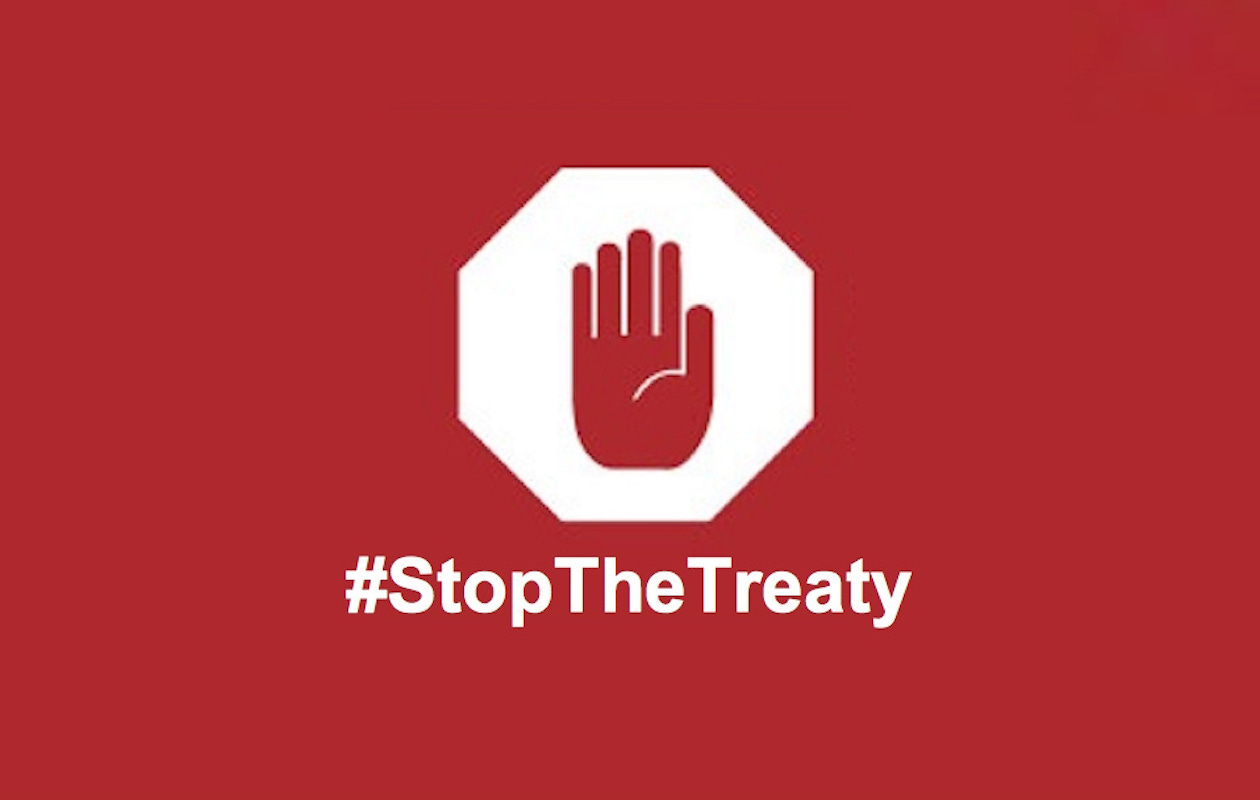

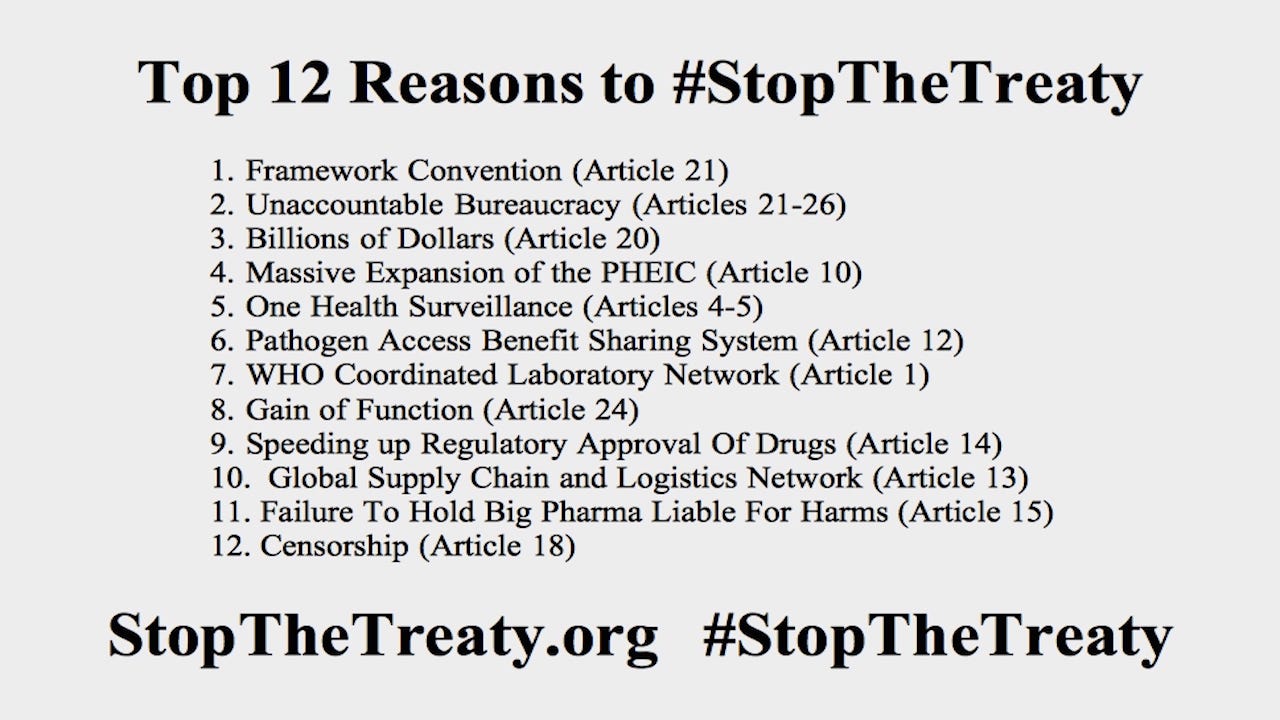









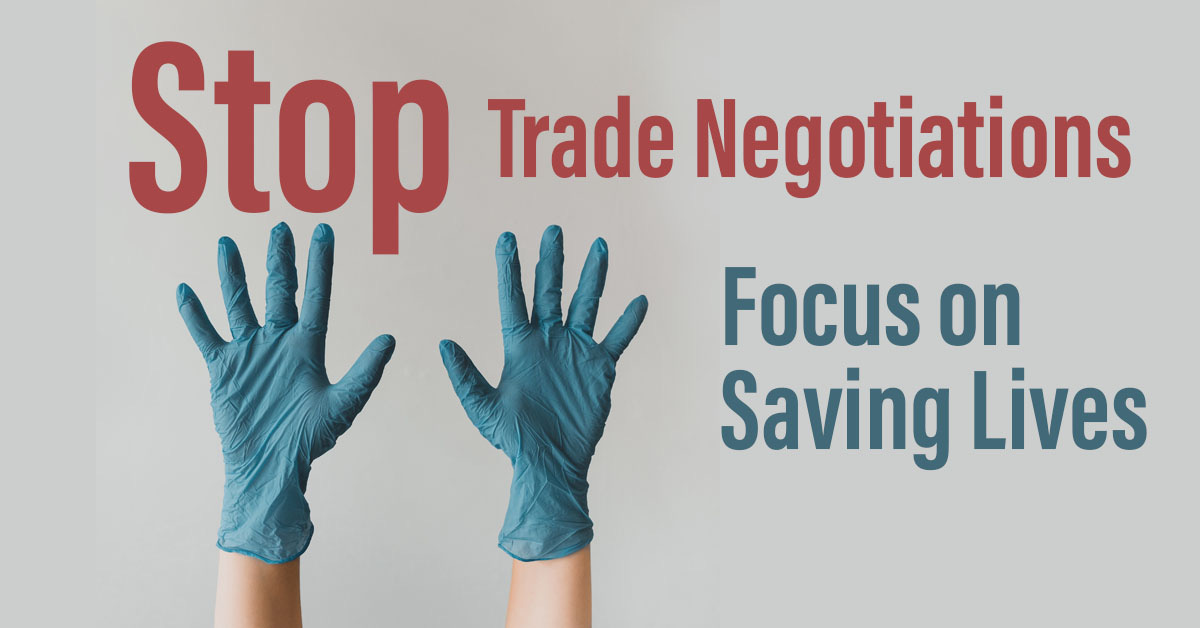

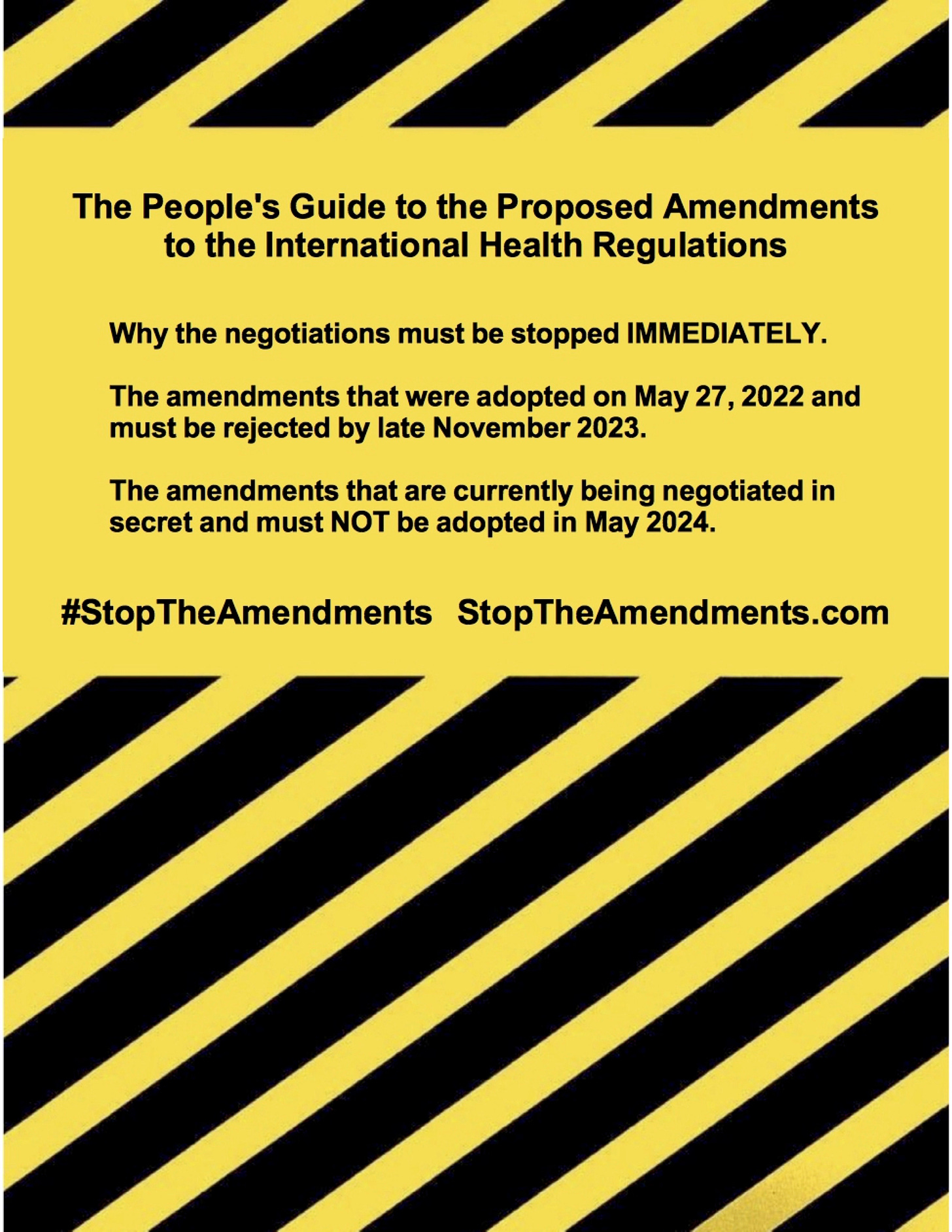



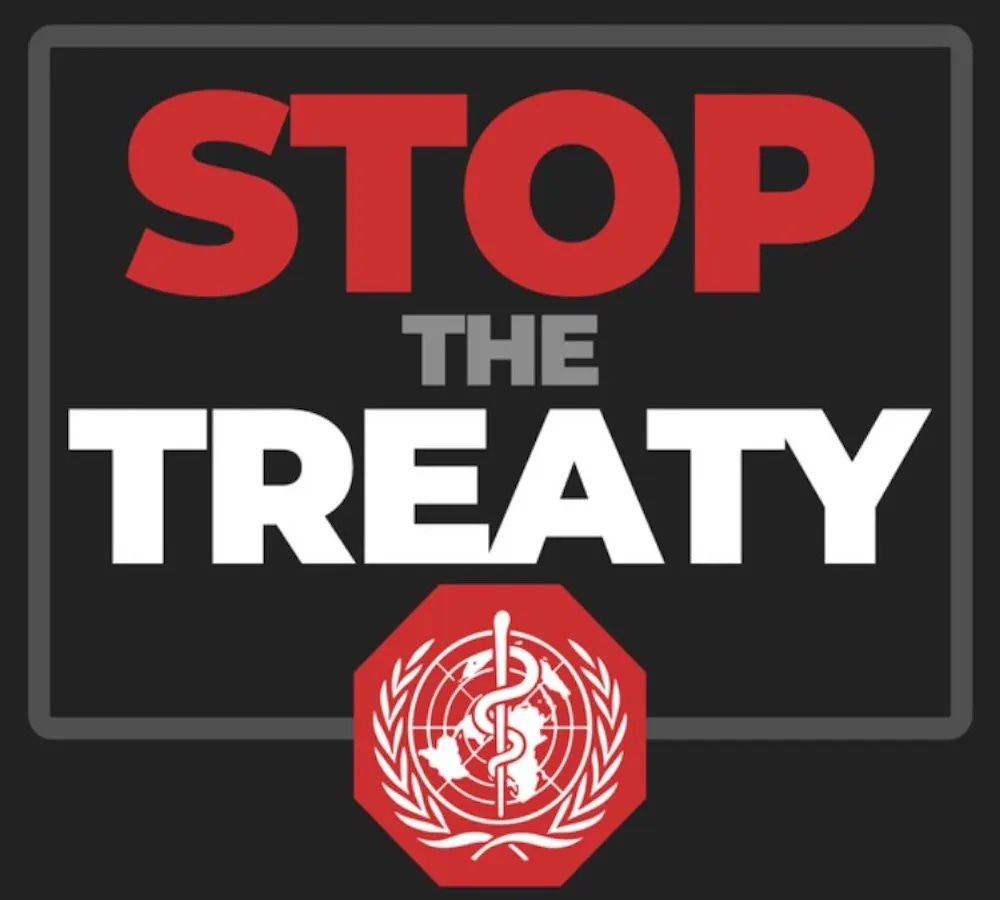

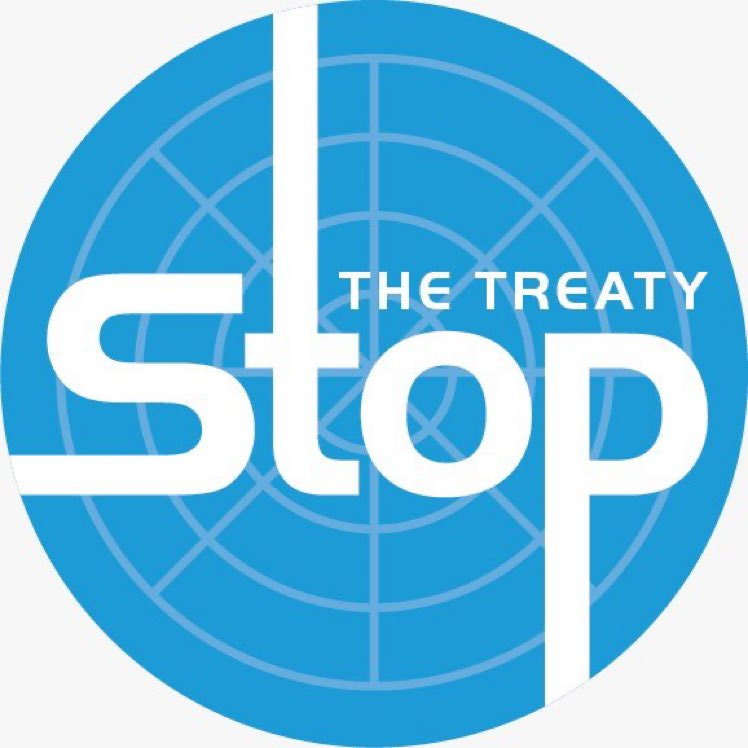

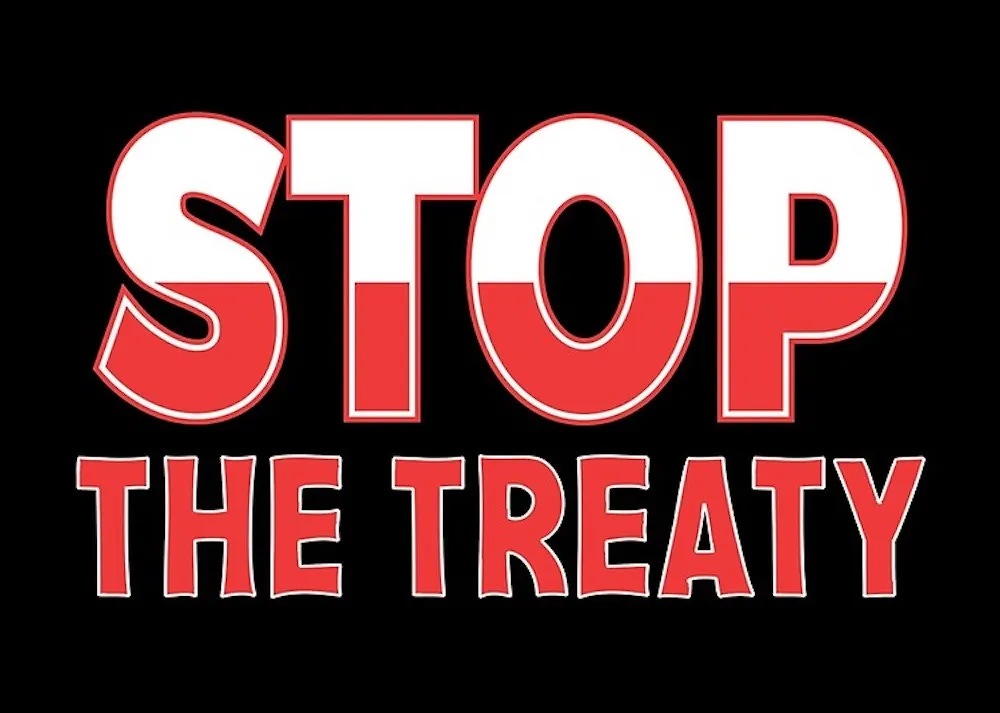

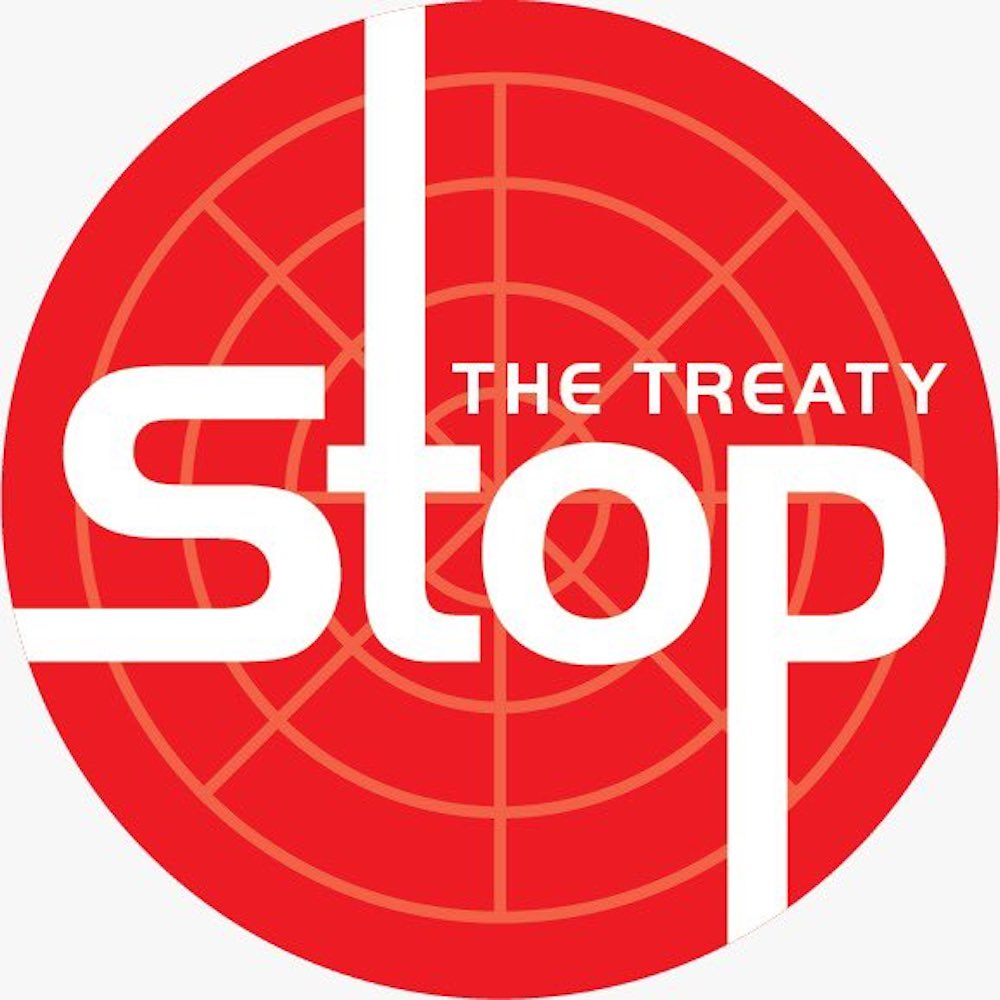

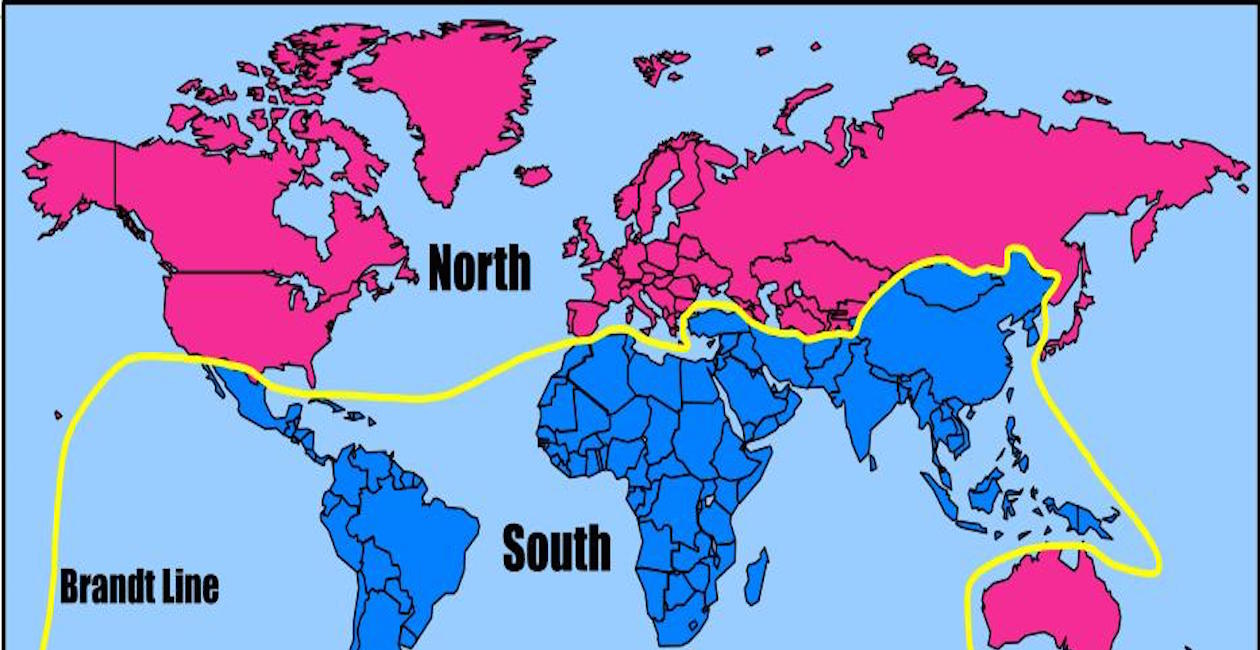

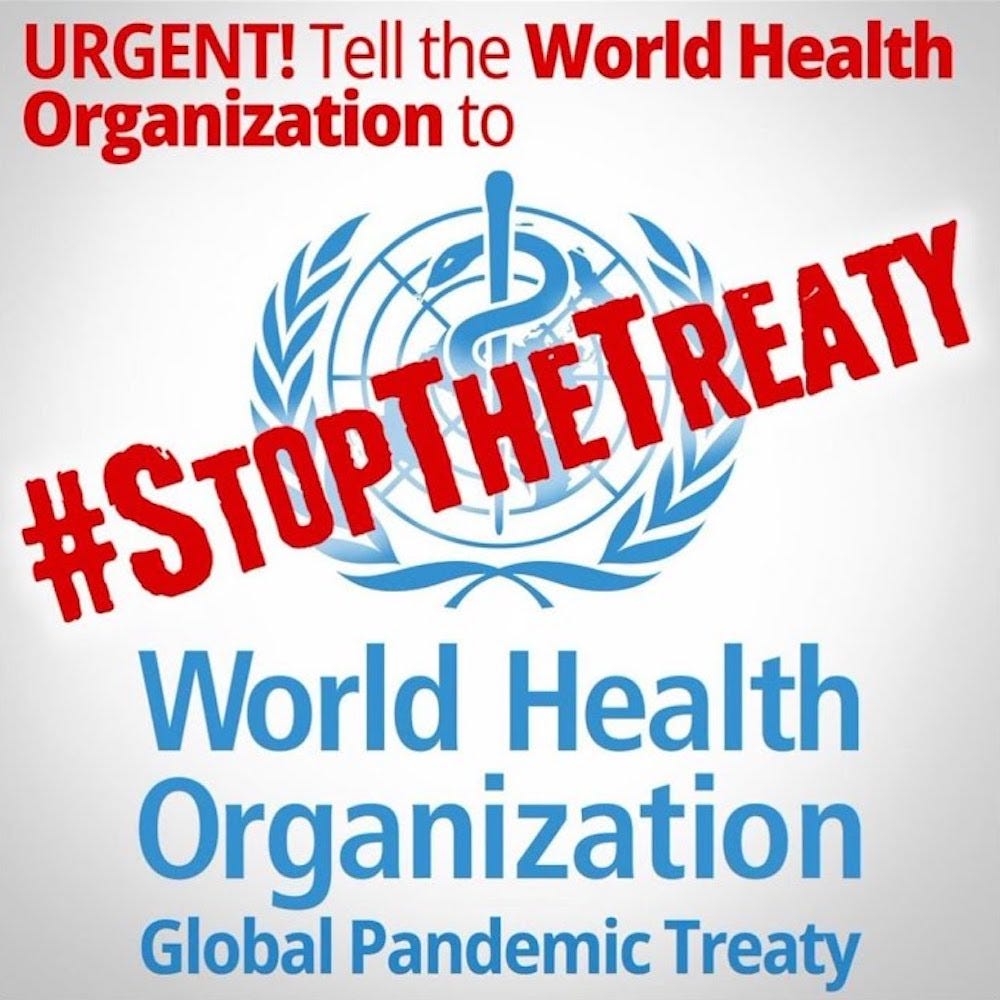


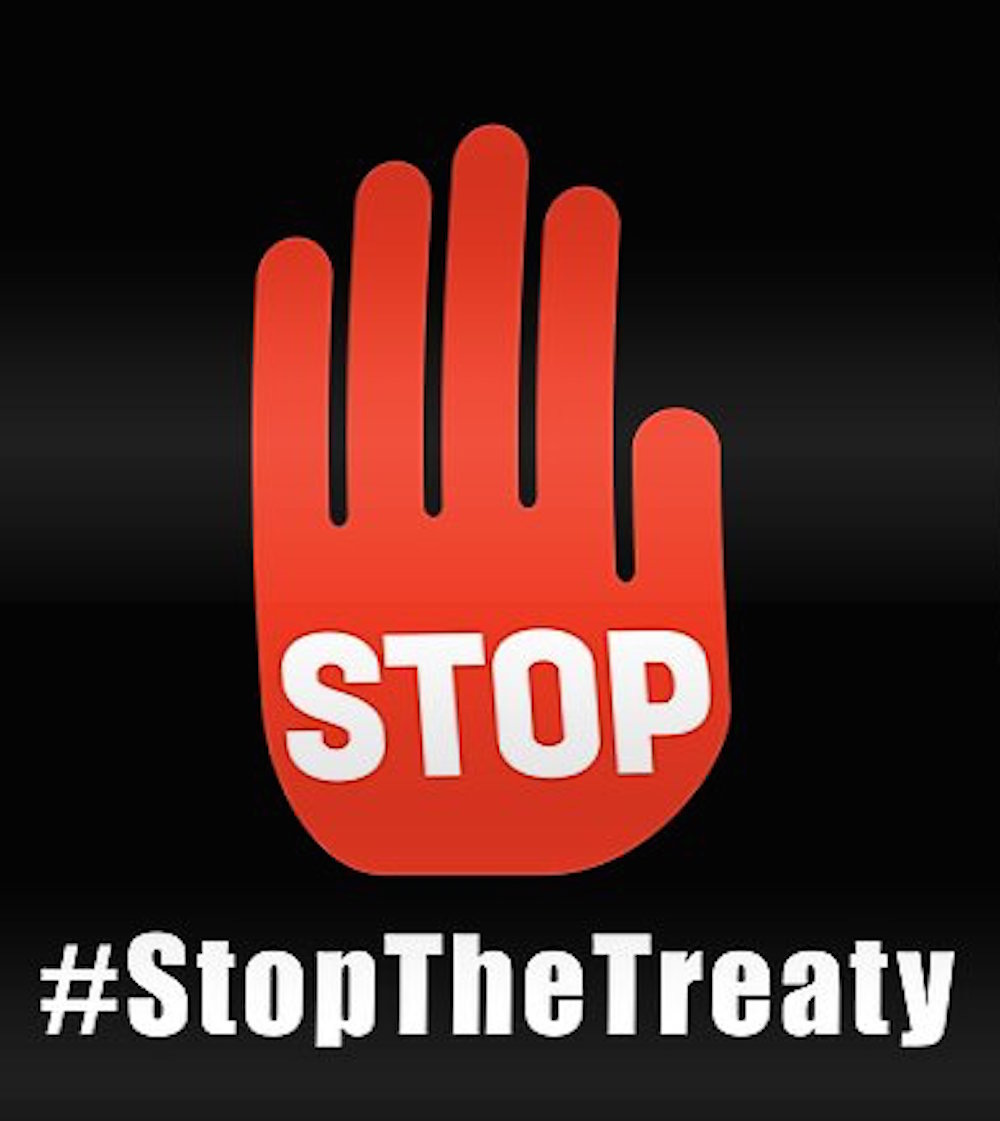

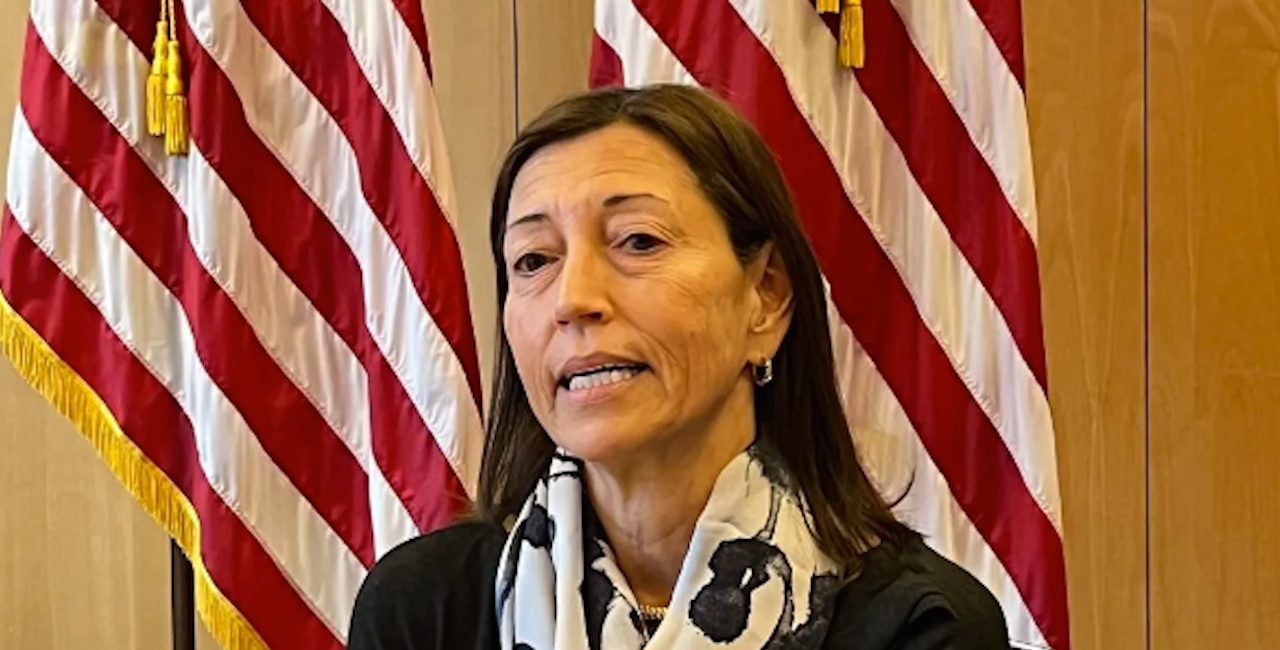






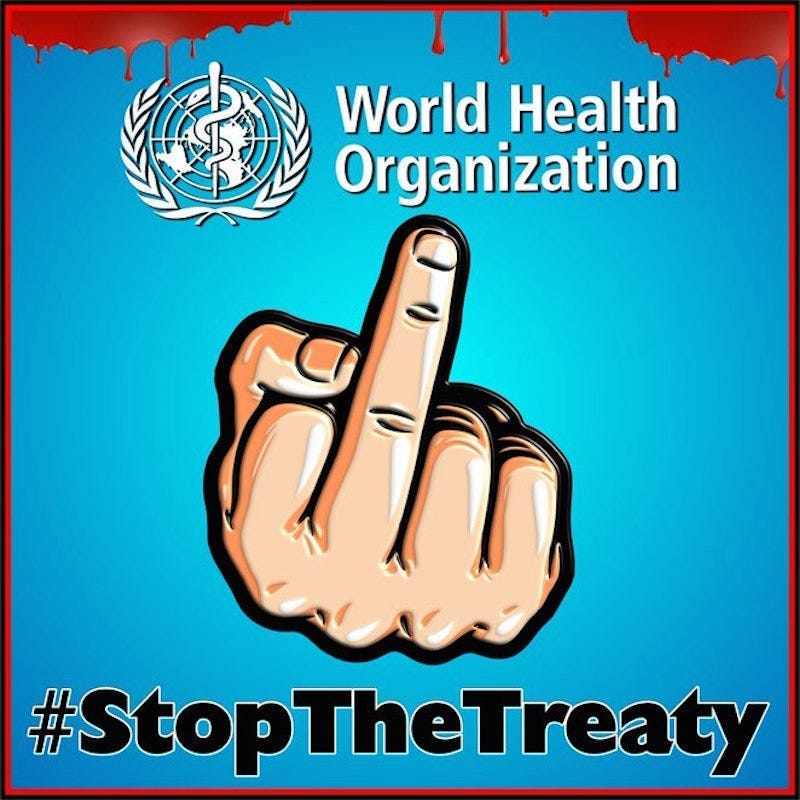
Thank you James! This is some kind of evil!!!
Thank you James. Continuing to do all I possibly can to expose and bring up short the true intentions and evil of the WHO. Their agenda effects ever person on our entire planet. Let’s keep their feet to the fire.